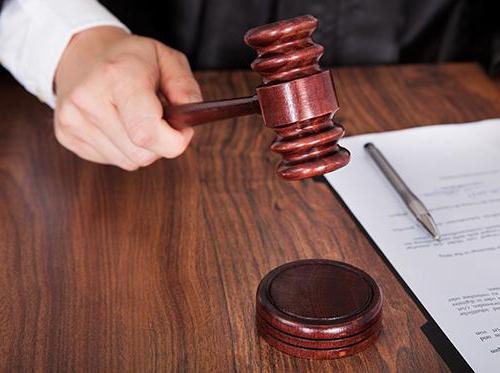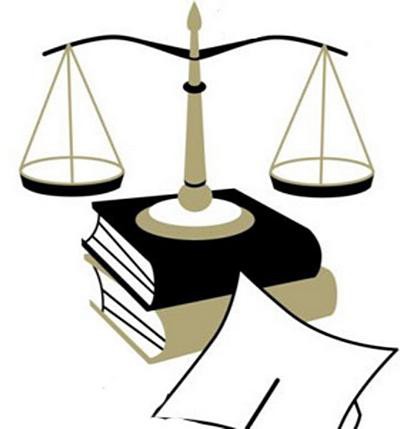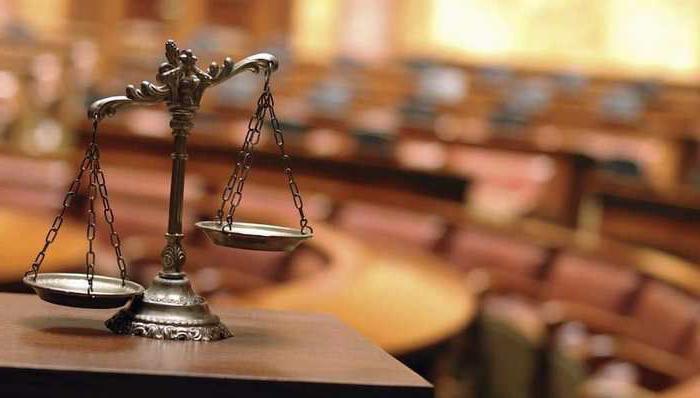The composition of any offense forms a complex of interconnected components. Only with their simultaneous presence is liability provided. These components are: object, subject, subjective side, objective side of the offense. Let's consider them in more detail. 
General information
The object of the offense, the subject of the offense, the objective side and the perpetrator’s personal attitude to his unlawful behavior is an essential component of the construction of the act. It, in turn, is a conscious act of man. Each element has an independent value only in conjunction with other components.
Direction of the offense
The object of the offense is social interaction, to which a person harms or threatens their normal existence. This definition is considered the most general. Each illegal action is always directed at a specific object. This may be the honor and dignity of a person, property, health, life, and so on. Any illegal action that did not even entail negative consequences causes harm to public order. Illegal behavioral acts cause chaos in relationships regulated by law. For example, preparation for a murder may not cause actual damage. However, the threat of its application is created in any case.
The objective and subjective side of the offense
These components of an illegal act have their own specifics. Each person committing an illegal act has his own attitude to his behavior. It reflects the subjective side of the violation. It expresses the delicacy of the face. This means that only the guilty act acts as an offense. In other words, at the time the offense was committed, the subject controlled his behavior and was aware of it. The objective side of the offense is characterized by first of all, the illegal action / inaction itself is directly. It entails negative consequences. They also perform as sign of the objective side of the offense. As mentioned above, structural components exist in interconnection. In other words, the action of the subject should entail certain consequences. Such causation is also included in the objective side of the administrative offense. 
Component Classification
Signs of the objective side of an administrative offense divided into mandatory and optional. As noted by A. V. Malkov, the first should include:
- Act.
- Effects.
- Causal relationship.
Means of accomplishment, setting, time, place of event, the author considers optional signs of the objective side of the offense. Such a separation is considered rather arbitrary. This is due to the fact that any act is committed at a certain time, in a particular place, by one way or another, etc. However, in some cases, the legislator does not include these Elements of the objective side of the offense in the disposition of the norm. As a result, they acquire the status of neutral (optional). In other cases, the norms directly indicate the time, place, method of misconduct directly in the disposition.
Examples
Art. 129.1 of the Tax Code establishes liability for the unlawful failure to provide information to the tax inspection. In this caseobjective side of the offense lies directly in the fact of inaction.Time, method, place of misconduct is not taken into account. The opposite approach is applied in Article 120 of the Tax Code. In the first part, a penalty is established for a gross violation by an enterprise of the procedure for recording expenses / income or objects of taxation, if it is allowed during one reporting period. Here, not only the offense itself is important, but also the time of its commission. 
Effects
The objective side of the offense in a number of cases it is formed only by the act itself. However, it may not lead to negative consequences. For example, liability is established for appearing at work while intoxicated, failure to comply with health and safety regulations, possession of weapons without permission issued by authorized bodies in the established manner, and so on. If such an offense nevertheless entailed negative consequences, then the liability is either tightened or applied on the grounds stipulated by the norm in which objective side of the offense contains an indication of the existence of consequences as a prerequisite for holding a citizen accountable.
Causal relationship
The objective side of an administrative offense involves determining the consequences. Accordingly, it also provides for the establishment of a causal relationship between them and, in fact, the act. Its presence takes place if the person’s behavior, preceding the consequences, determined the onset of the consequences. That is, the citizen’s action caused the damage.
Harm
It is expressed in the complex of negative consequences of an unlawful act. The harm can be expressed in the destruction of values, the creation of obstacles for the rightful owner to use them, violation of order, infringement of the subjective rights of others, restriction of freedom of their behavior. The forms in which harm is manifested are very diverse. Damage can have material, physical and other character, encroach on general or specific interests. Some acts entail a violation of the normal activities of enterprises and authorized bodies. For example, a failure to appear on a call or avoiding a visit to the Federal Tax Service in a case involving a tax misconduct creates obstacles to an effective and timely investigation. 
Nuances
Undoubtedly, harm can have a different size, character, differ in other criteria. but objective side of the offense always involves the occurrence of social damage. The harm can be moral or material, to have or not to have a quantitative assessment, to be more or less significant, felt by the collective, a separate individual or the whole society. But the presence of damage is considered a necessary sign of an offense. It is he who makes it possible to qualify an act as socially dangerous.
Subjective side
Legislation allows the imputation of responsibility to persons sane and legally capable. In other words, they must reach a certain age, and their psyche must be formed and complete. Normative acts determine the circle of persons who cannot be punished for offenses. They include mentally unhealthy people, minors. The subjective side of the violation is formed:
- The fault.
- Motive.
- Purpose.
The qualification also has the emotional background of the person at the time the act was committed. These components have different contents. But they are united by the fact that they characterize the processes that occur in the psyche of the face. That is why they are combined into one group. 
Wines
It is considered a mandatory sign of an offense. Optional components are the emotional background, purpose and motive. Guilt expresses the mental state of a person, his attitude to the wrongful act that he commits, as well as his reaction to possible consequences. It involves an understanding or awareness by the subject of the inadmissibility of his behavior.In the absence of guilt, an act cannot qualify as an offense. It can be expressed in two forms. Guilt can be direct or indirect. In the latter case, it is understood that the subject anticipates negative consequences and wishes them to occur. Indirect guilt implies that a person understands the likelihood of harm, but, by his arrogance or negligence, thinks that it can be avoided. The conclusion follows from this. If wrongfulness always involves guilt, then the absence of the latter indicates the absence of the former and, therefore, the impossibility of being held accountable.
Guilt specificity
In the formation of intentional and careless forms, the legislator uses two elements - strong-willed and intellectual. Examples of this can be found in different standards. So, according to Article 110 of the Tax Code, a tax crime will be considered committed intentionally if the subject understood the unlawfulness of his action / inaction, wished or deliberately allowed the onset of negative consequences from his behavior. This wording can be found in part 2 of this norm. Understanding of wrongfulness acts as an intellectual sign, and a conscious assumption and desire for the onset of consequences - as a strong-willed one. 
Intent
Most of the unlawful acts are committed with a clear understanding of their illegality. For example, through negligence it is impossible to commit rape, robbery, robbery. But there is a category of offenses that are committed without the intention of doing harm. A person may act against his will and desire. In this case, talk about frivolity. Intent can be indirect and direct. In the latter case, the subject not only understands the unlawfulness of his behavior, but also wishes the onset of negative consequences, seeks them. Indirect differs from direct intent in characterizing the volitional aspect. In the second case, the person is indifferent to the likelihood of negative consequences. Intent expresses the extreme form of a person’s negative attitude to society, the rights of others.
Presumption
She is a form of frivolity. Arrogance assumes that the offender foresaw the likelihood of consequences, but counted on their prevention, without having sufficient grounds for this. For example, a motorist does not fulfill the requirements for observing the speed limit. At the same time, he expects that he has the necessary driving experience to prevent an accident. Due to this arrogance, he knocks down a pedestrian. The will of the violator in this case is aimed at preventing negative consequences, however, its calculation is unreasonable.
Negligence
This is the second form of frivolity. It is expressed in the fact that the person did not foresee the negative consequences of his actions, although with due diligence and attentiveness he should have assumed them. The determination of the volitional aspect of negligence is determined by subjective ("could have assumed") and objective ("should have foreseen") criteria. In practice, the latter is associated with the duties of a person imputed to him on the basis of legislation, in accordance with professional status, generally accepted rules of behavior, etc. The subjective aspect means the ability to foresee the consequences with the proper stress of consciousness and will. For example, the doctor must presume the likely complications from the patient taking medications and must take measures to neutralize them. 
Motive
He expresses the motive for committing an illegal act. Motive - this is what, in fact, is guided by the subject. The act is committed out of self-interest, hooligan, sexual motives. The motive may be political, selfish, etc. For example, a tax violation is committed out of self-interest, since the subject seeks to avoid expenses.
purpose
It represents the result that the subject wants to achieve by committing an offense. Quite often, the legislator identifies the goal as a mandatory component of the design of the act. The corpus delicti, provided for in Article 285 of the Criminal Code, will take place only if it is committed out of self-interest or for another personal interest.
Criteria for holding accountable
The main condition is tort. It involves the ability to be responsible for one’s actions. For its recognition, the legislation establishes certain requirements. First of all, this is the achievement of a specific age. According to general rules, criminal penalties can be imputed from 16 years. But responsibility for certain crimes comes from 14. However, it should be borne in mind that some acts of a person can be committed at an older age. For example, judges may be held liable for attacks against justice. And they, in turn, can become persons who have reached 25 years of age. As for administrative responsibility, then, as a general rule, 16-liter citizens are involved in it. Disciplinary punishments may also be imposed from this age. The Civil Code recognizes persons who have reached the age of 18 as subjects of offenses. But, as Article 27 of the Code points out, a person can be recognized as fully capable and with 16. For this, he needs to work under a labor contract or engage in entrepreneurial activity with the consent of legal representatives.
Conclusion
The content of the offense acts as its main internal characteristic. It allows you to distinguish it from other behavioral acts. The objective side of an administrative offense is one of the key aspects of qualification. It characterizes the external properties of the act. It is the objective side of the corpus delicti that allows determining the presence and magnitude of harm, its features, and the direction of the offense. Based on these indicators, the conformity of the person’s actions to a specific norm is established. Meanwhile, the objective side of the corpus delicti does not yet allow the application of punishment. A prerequisite for prosecution is guilt. In the absence of this element, the punishment will be considered unlawful. Illegal actions have certain properties that make it possible to distinguish them from other actions / inaction. These signs must be analyzed in the aggregate. Only their full presence allows us to unambiguously qualify the act as unlawful. Offenses are considered an abnormal phenomenon in public life. The prerequisites for their implementation are various economic, political, moral, social factors. At the same time, as many experts note, since offenses have an inextricable link with public life, they will always take place. Accordingly, the state should develop adequate responses to such antisocial phenomena. In the context of the development of relations between people, improving the quality of life, improving well-being, strengthening guarantees, increasing the protection of citizens, deepening their political maturity, the volume of illegal behavior is declining. In the presence of favorable conditions, prerequisites are formed to reduce the qualitative and quantitative level of offenses.